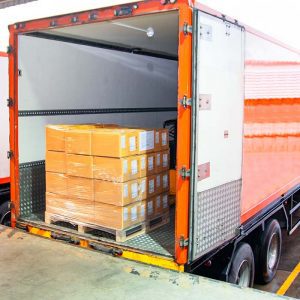
Decoding the 2025 LTL Landscape: What Shippers Need to Know (Part II)
In Part I of this blog series, we focused on the major changes coming soon to less-than-truckload (LTL) freight classification. The National Motor Freight Traffic Association, Inc. (NMFTA™) introduced a phased-in approach that kicks into gear on July 19th, which means companies have about a month to get their systems in place to adapt to these changes (of which there will be more to come at a later date).
 The changes are happening for a few different reasons. By placing a greater emphasis on density – the weight of the shipment relative to its volume – the NMFTA aims to create a more objective and easily measurable standard. Density directly correlates with the space a shipment occupies on a truck, a key cost factor for carriers.
The changes are happening for a few different reasons. By placing a greater emphasis on density – the weight of the shipment relative to its volume – the NMFTA aims to create a more objective and easily measurable standard. Density directly correlates with the space a shipment occupies on a truck, a key cost factor for carriers.
Also, advancements in freight dimensioning technology are enabling more precise measurement of shipment density. Because of this, a density-based classification is simply more practical and reliable than ever before. For example, carriers can now more accurately assess the space utilization of each shipment upfront. This means more precise initial quotes and fewer unexpected charges for shippers.
Much like the dimensional weight classifications changed the way parcel shipments are assessed, these new LTL classifications are sure to create some confusion once they go into effect in July. The good news is that with some initial preparation and the help of a modern transportation management system (TMS), shippers and freight brokers can navigate these changes with greater efficiency and accuracy. In fact, RevenovaTMS provides a suite of tools specifically that address complexities introduced by the new density-based classifications.
Decoding Density: Your TMS Advantage
A modern TMS is a powerful enabler for shippers and freight brokers across several fronts, some of which relate directly to the density-based LTL classification process:
- By automating data capture, streamlining communication, and providing robust analytical tools, TMS empowers businesses to adapt quickly, maintain control over their shipping costs and ensure a smooth transition into the evolving LTL landscape.
- Revenova TMS also comes with powerful analytical capabilities that companies use to gain insights into their freight density trends, identify opportunities for packaging optimization and analyze cost implications across different carriers and lanes. “This data-driven approach empowers shippers to make informed decisions and mitigate potential cost increases,” says Jeremy Estep, Chief Revenue Officer at Revenova.
- For freight brokers, TMS simplifies the process of comparing carrier rates based on the new density classifications. A system like RevenovaTMS can quickly review quotes from multiple carriers—factoring in dimensional characteristics of the freight—to come up with the most cost-effective and efficient transportation solutions for clients.
- A modern TMS also facilitates proactive exception management by flagging potential classification discrepancies before they lead to downstream issues like billing errors or shipment delays.
- And, it provides a centralized platform for maintaining an audit trail of classification decisions, supporting compliance and simplifying dispute resolution.
These are just some of the ways organizations can apply technology to major industry shifts like the upcoming LTL reclassifications. Having worked for SMC³, a provider of data, technology and education solutions for the LTL industry, Estep says that adapting to these types of sweeping changes can be challenging—at least at first.
For example, any shipper that’s not using a Freight All Kinds (FAK) pricing agreement with its carriers—where multiple freight classes are treated as “one class” for billing and shipping purposes—may need to adjust how to package and ship their goods. “They’re going to have to shift over to using stock keeping units (SKUs) in order to manage the new density rules properly,” says Estep.
That pivot won’t be easy for organizations that for years (or even decades) have been using systems that have built-in algorithms for managing the current classification process. “These companies may have to shift to using a more manual process, and that’s going to be difficult for them—at least in the interim,” Estep says. “There will be some short-term pain as companies figure out how to automate the changes within their legacy TMS platforms.”
Simplifying the Shift
The impending shift to density-based LTL freight classifications will undoubtedly present an initial period of adjustment for both shippers and freight forwarders. The intricacies of the new rules will require careful parsing and translation into automated workflows within the software. “Until this integration is fully realized, both parties may experience some friction as they adapt their processes and ensure accurate classification and rating under the new guidelines,” says Estep, who emphasizes the importance of selecting a TMS that’s agile and proactive in incorporating industry-wide changes.
“The long-term benefits of utilizing a modern system in this evolving landscape are substantial,” he continues. For example, an advanced system like RevenovaTMS simplifies the complexities inherent in freight management, including the upcoming LTL classification changes. “Revenova can effectively handle these new rules by embracing modern technologies like APIs and direct integration with data providers,” Estep explains, “and it does that much more efficiently and comprehensively than legacy systems that are still using older data consumption methods.”
To learn more about Revenova TMS, Request a Demo. Follow Revenova on LinkedIn, YouTube, and X for the latest updates and news about Revenova TMS, the original CRM-powered Transportation Management System.




